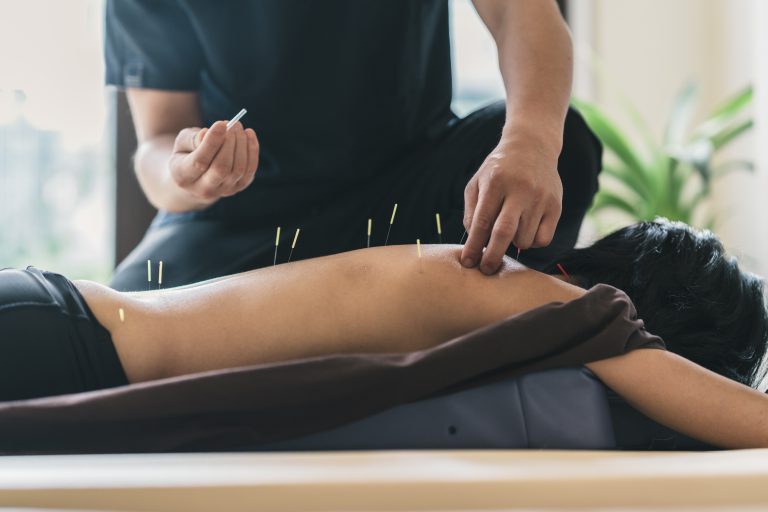Western Medical Acupuncture

Western acupuncture (also called dry acupuncture) is a relatively new and very effective technique for treating muscle aches, chronic pain and rehabilitation and prevention of sports injuries. It combines information from Western medicine including anatomy, physiology and neurophysiology. Daily activities such as prolonged sitting, strenuous work and lack of sleep can add to the level of pain and aggravate the condition. As a result, the fascia tissue, which covers the inner part of organs, muscles, nerves and blood vessels, tends to become infected so that blockages and pressure points (also called trigger points) are created and disrupt the supply of oxygen, vitamins, toxins and waste. In these places a feeling of pain may form.
The acupuncture is based on Chinese medicine and is similar to Chinese acupuncture only in the type of needles. In Chinese acupuncture the work is done on the meridian points in the body and in Western acupuncture the work is on the pressure points and pain pathways. The action improves blood circulation and awakens the body to heal and rebuild muscle tissue in the problematic area, is beneficial in reducing pain and improves range of motion.
The days following the treatment you can feel your body working in the treated areas. The response to treatment is rapid and noticeable results can be seen even after a single treatment or a small number of treatments.
History
Western acupuncture is also known by other names such as dry acupuncture or orthopaedic acupuncture. Western acupuncture began in the 1940s and began to be widely used in 1979 by a Czech physician named Karl Levitt when he introduced the positive effects of inserting a material-free needle into affected areas. This method has evolved significantly over the years.
Pressure Points / Trigger Points (TrPs)
By medical definition, a pressure point is a point where pain is felt within the muscle or radiation of pain in the area. The spot is formed as a result of microscopic changes in the muscle fibers in the pain area that causes the muscle fibers to shorten and be in a contracted state. Sensitivity is expressed in sending nerve messages that are received by the nervous system, which are translated in the body into a feeling of pain. The pain can manifest itself in radiation to the area around the point, as point pain in the point itself, in a general feeling of muscle contraction and limitation in movement, discomfort and a feeling of heaviness, burning or paresthesia.
The reasons for this kind of muscle behaviour can be strenuous physical work, stress or mental strain, improper work, chronic physical problem, accident or injury, lack of rest or sleep and more. In some people the stress and pain pass after a few days or weeks and the area recovers with a full return to function. In others the pain can remain for a long time without change or even aggravate the condition without proper treatment.
Leaving the situation unchanged for a long period of time weakens the muscle both in the day-to-day ability to work and in the effect of training of any kind. The contracted muscle loses its flexibility, causes a feeling of stiffness and causes the muscle to shorten in general. In addition, a dysfunctional muscle impairs the stability of the body and the respiratory sequence.
Possible treatments for trigger points:
- Sports activities:
Stretching is an effective tool used as a preventative treatment and especially relieves
chronic problems. The same is true for proportionate sports activities such as long walks
or jogging, due to increased heart function in activities rather than muscle stretching that
encourages blood circulation and self-healing of the area. Yoga helps a lot in stretching
and lengthening the muscles. - Medical massage:
Massage of these trigger points and the adjacent areas in the various pain pathways
combined with applied pressures on the points themselves encourage blood flow to these
areas and provide physical release and self-healing of the area. - Western Acupuncture:
Performing Western Acupuncture at these points and adjacent areas stimulates the
muscle and the entire area to an enhanced state of healing by increasing blood flow in the
treated area and greatly improving the level of pain and range of motion. - Medicinal Herbs:
Using medicinal herbs to reduce pain and inflammation that forms around the these
points.
How the treatment is performed
Every treatment is suited to the patient’s needs according to the problem he presents and according to the diagnosis of the therapist of his body condition. The treatment is performed lying on a treatment bed in a tummy, back or abdominal side position as required. The pain from the stabbing may be felt for a few seconds and depends on the location and sensitivity of the place and the patient. At the end of the acupuncture the patient’s body is covered with a sheet and the patient stays with the needles for about 15-45 minutes until they are taken out at the end of the session.
